The vibrant blue color of orchids is a sight to behold, but is it possible for such a flower to exist in nature? The question of “are blue orchids real” has been a topic of discussion among botanists and flower enthusiasts alike. In this blog post, we will delve into the world of blue orchids, uncovering their reality, rarity, and how to care for them.
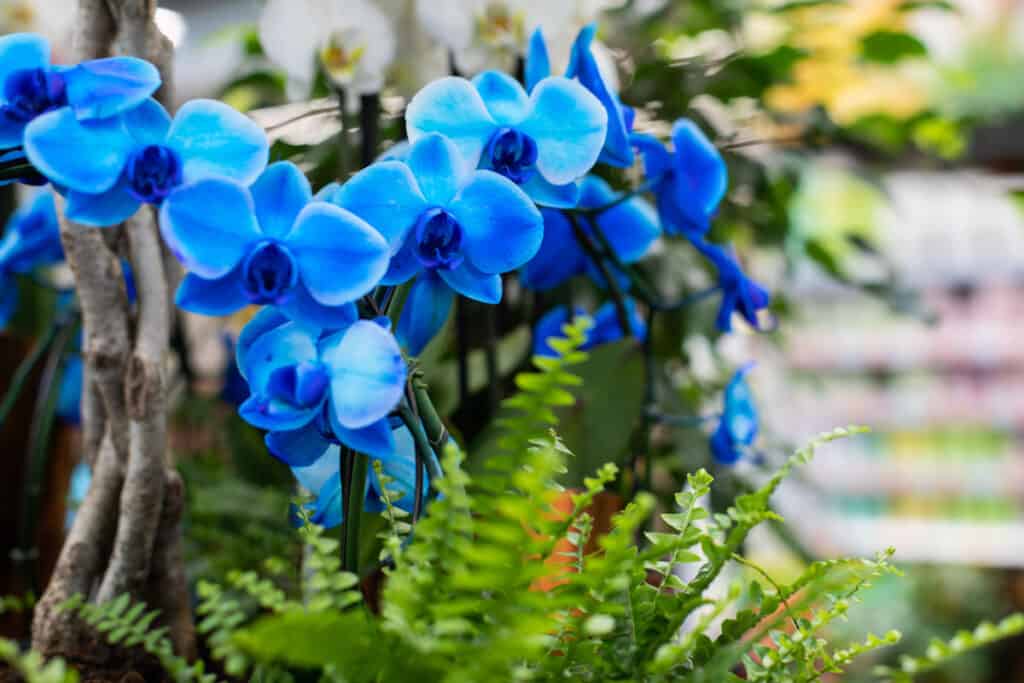
Contents
Are Blue Orchids Real?
Blue orchids are real, but rare. They can be naturally occurring, but more often the blue hue comes from dyeing. This process involves injecting a special dye into the petals to create an eye-catching, unforgettable look.
White Phalaenopsis orchids are popular candidates for this treatment. But some species such as Thelymitra crinita, Vanda coerulea, and Cleisocentron gokusingii can also have dazzling blue flowers without any color-enhancing techniques!
If you’re looking for something truly unique, blue orchids may just fit the bill. Their rarity makes them extra special and they’re sure to stand out in any room of your house!
Thelymitra crinita
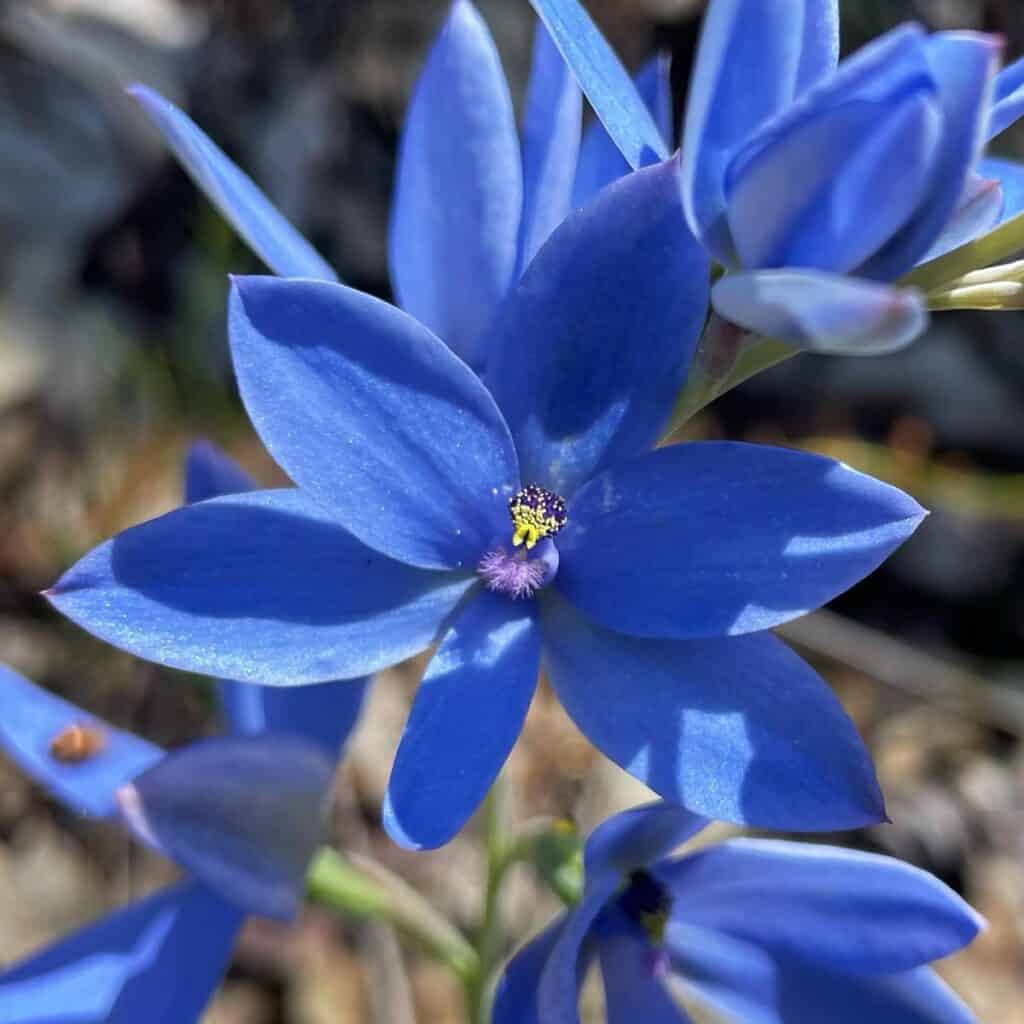
Thelymitra crinita is a species of orchid that is commonly known as the “blue lady orchid”. It is native to Australia and New Zealand, and it is known for its blue color which is quite rare among orchids. It has 2 to 15 flowers on each stem that open on sunny days, and it is typically found growing in coastal and near-coastal forests. The flowers of this orchid are typically brilliant blue or pale blue with a yellow center. This species is considered common in its range and not endangered.
Vanda coerulea
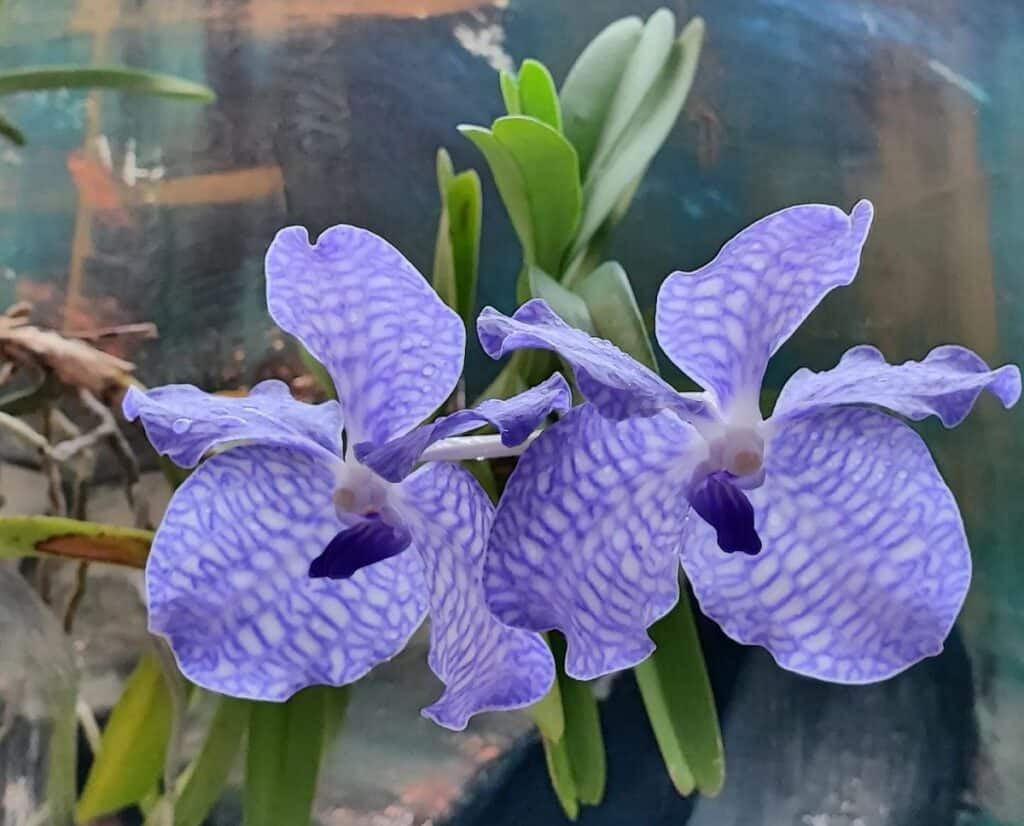
Vanda coerulea, also known as the Blue Vanda, is a species of orchid that is native to China and India. It is known for its beautiful purple-blue flowers which are quite large, and it is considered to be one of the most prized and sought-after orchids. The plant typically produces multiple spikes of flowers and the flowers are commonly arranged in a cascading manner. The plant is usually epiphytic, meaning that it grows on other plants instead of soil and it requires a lot of humidity, light, and warmth for optimal growth.
Related Post:
15 Popular Types Of Vanda Orchids (With Names & Pictures)
Cleisocentron gokusingii
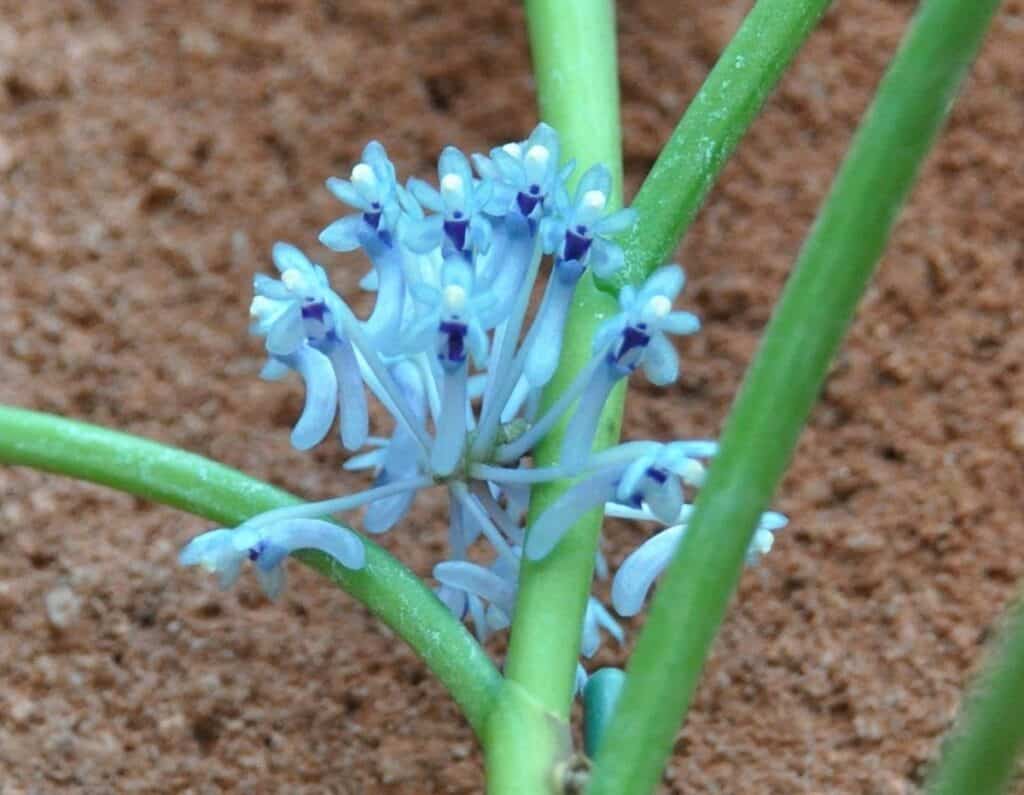
Cleisocentron gokusingii is a true blue small to medium-sized orchid that is native to Borneo. The orchid is known for its Cambridge blue flowers that are produced on short, compact spikes that arise from the base of the plant.
How Do Blue Orchids Get Blue?
Blue orchids get their blue color from pigments called anthocyanins. These pigments are found in the cell sap of the orchid’s petals and are responsible for the blue color. The color of the flower is determined by the amount and type of pigments present, as well as the pH level of the cell sap.
There are some orchids that have natural blue pigmentation due to the presence of these pigments. However, in some cases, the blue color is not natural and is achieved through a process called “dyeing.” This process involves injecting a blue dye into the orchid’s petals, which results in a blue color. It is important to note that this process is quite common practice and many of the blue orchids you see are dyed.
In some cases, blue orchids are created through hybridization, where two or more different species of orchids are crossbred to create new and unique hybrids. This process can result in the creation of blue orchids, as well as other colors that are not typically found in nature.
How Do You Grow Blue Orchids?
If you’re looking to grow your own blue orchids, there are a few things you should know.
- Light: Blue orchids require bright, indirect light. Avoid direct sunlight, as it can cause the color of the flowers to fade or change.
- Temperature: Blue orchids prefer a specific temperature range for optimal growth and flower production. They typically prefer temperatures between 60 and 80 degrees Fahrenheit (15-27 degrees Celsius).
- Humidity: Blue orchids require high humidity, between 50-70% humidity is ideal.
- Watering: Blue orchids should be watered regularly, but not too often. Allow the potting mix to dry slightly between waterings.
- Fertilizer: Blue orchids require specific nutrients to produce flowers and maintain their color. Use a balanced fertilizer, and follow the manufacturer’s instructions for application.
- Potting mix: Blue orchids require a well-drained, moisture-retentive potting mix. A mixture of bark, peat moss, and perlite is ideal.
- Repotting: Blue orchids should be repotted every 2-3 years, or when the potting mix has broken down and become compacted.
- Pest and disease: Blue orchids are susceptible to pests and diseases, so it is important to keep an eye on the orchid’s health and to address any issues as soon as they arise.
Frequently Asked Questions
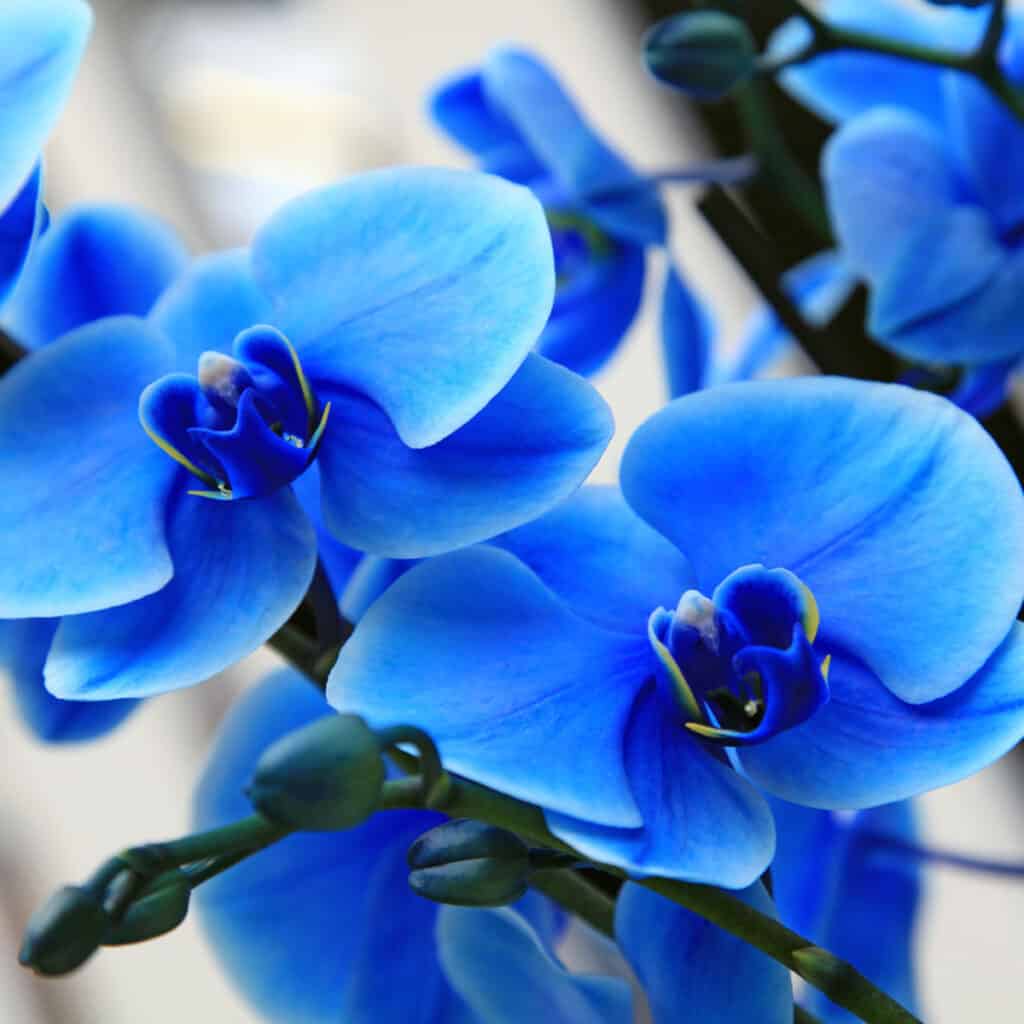
What Color Are Real Orchids?
Orchids come in a wide variety of colors, with each species having its unique coloration. Some of the colors that are commonly found in orchids include:
- White: Many orchids have white flowers, which can be accented with other colors such as yellow, pink, or purple.
- Pink: Orchids with pink flowers are quite common, with shades ranging from pale pink to deep rose.
- Purple: Orchids with purple flowers are quite popular, with shades ranging from light lavender to deep purple.
- Yellow: Orchids with yellow flowers are less common, but they are available, with shades ranging from pale yellow to deep golden.
- Red: Orchids with red flowers are less common, and they are considered to be quite rare.
- Blue: Orchids with blue flowers are considered to be quite rare and unique, blue orchids can be naturally blue or artificially dyed.
- Green: Orchids with green flowers are less common, but they are available, some orchids have green petals with other colors on their lip.
It’s worth noting that, there are also orchids that have bi-colored, multi-colored, or patterned flowers, and some orchids have no visible flowers at all, instead they have a lip that mimics the appearance of a flower. Orchids are incredibly diverse and come in a wide variety of colors and patterns, each one of them is unique and beautiful.
What Are Blue Orchids Called?
Blue orchids are not typically referred to by a specific name, as the color blue can occur in many different species of orchids. Some examples of blue orchids are:
- Thelymitra crinita, commonly known as the “blue lady orchid”
- Vanda coerulea, also known as the Blue Vanda
But it’s worth mentioning that not all species of orchids that have a blue color are referred to as blue orchids, they are known by their scientific name or by a common name that reflects their natural habitat or appearance.
Additionally, it’s important to note that not all blue orchids are naturally blue, some of them might be dyed to achieve that color.
Are Blue Orchids Expensive?
The cost of a blue orchid can vary depending on several factors such as the species, the rarity, the size, the quality, and the location where it is purchased. In general, blue orchids are considered to be rare and unique, therefore, they may be more expensive than other more common orchids.
In any case, it’s always a good idea to research and compare prices before purchasing a blue orchid, and to purchase from a reputable seller.
Where Do They Inject Color In Orchids?
Orchids that are artificially colored through a process called “dyeing” have the dye injected into their petals. The dye is injected into the base of the orchid’s petals, where the cells are actively dividing, which allows the dye to be distributed throughout the petal.
The process is done with a needle or a syringe, which is used to inject the dye into the base of the petals. Once the dye is injected, it will slowly spread throughout the petal, resulting in an even color distribution.
Why Did My Blue Orchid Come Back White?
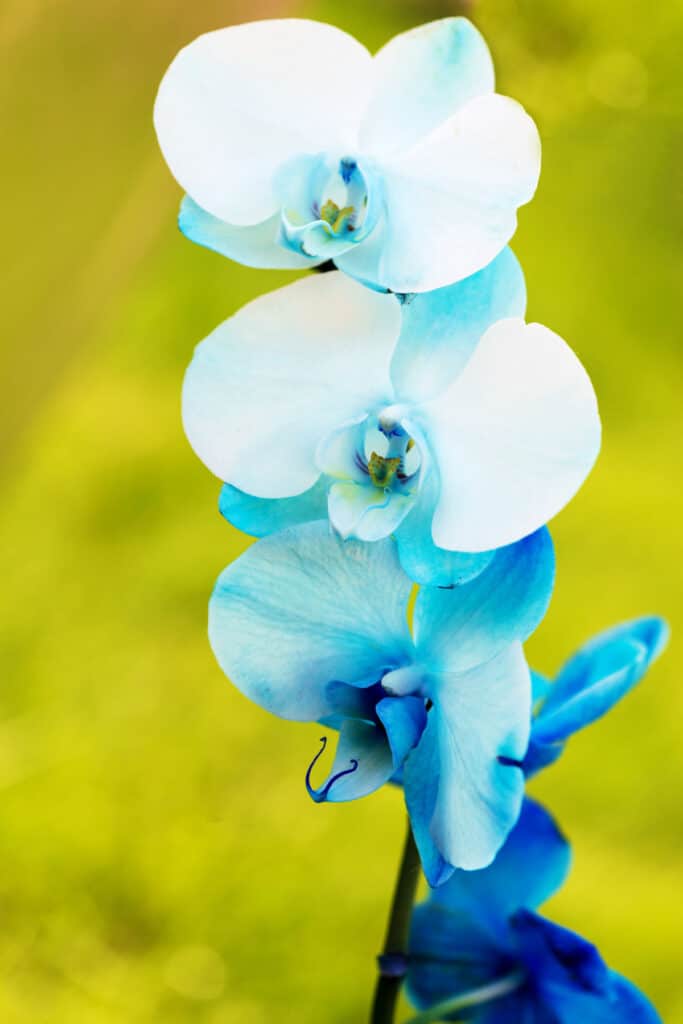
There are a few reasons why a blue orchid might come back white after blooming. Some possible explanations include:
- Lack of nutrients: Orchids require specific nutrients to produce flowers and maintain their color. If the orchid lacks the necessary nutrients, it may not produce flowers, or the flowers may be white.
- Environmental conditions: Orchids require specific environmental conditions for optimal growth and flower production. If the conditions are not met, the orchid may not produce flowers, or the flowers may be white.
- Genetics: Orchids can naturally produce white flowers, and if the orchid was a hybrid, it could be a result of the genetic combination of the parent plants.
- Dyeing: If the blue color of the orchid was artificially achieved through dyeing, it is possible that the dye has faded or washed out over time and the orchid returned to its natural color.
- Age: Some orchids only bloom once a year and the flowers may have faded and fallen off and the new buds might be white.
It’s important to keep in mind that orchids are sensitive plants and small changes in the environment or care can affect their color and growth. It’s recommended to always keep an eye on the orchid’s health, and adjust the environment or care accordingly.
How Can You Tell A Fake Orchid?
There are a few ways to tell if an orchid is fake:
- Price: Real orchids can be expensive, and if the price seems too good to be true, it is likely that the orchid is a fake.
- Appearance: Real orchids have natural variations in color, shape, and size. If an orchid looks too perfect, it may be a fake.
- Materials: Real orchids are made of natural materials such as leaves, petals, and roots. If an orchid is made of plastic or silk, it is likely a fake.
- Weight: Real orchids have weight to them, fake orchids are typically lightweight.
- Smell: Real orchids have a natural smell, while fake orchids have no smell or a chemical smell.
- Durability: Real orchids require specific care and attention, fake orchids are usually more durable and can withstand different environmental conditions.
- Touch: Real orchids have a natural texture and feel, fake orchids may have a smooth and artificial feel.
It’s important to note that some fake orchids can be made with high-quality materials, and they can be difficult to tell apart from real orchids. If you are unsure, it’s always recommended to consult a specialist or purchase from a reputable seller.
Also, it’s worth mentioning that artificially colored orchids can also be considered fake orchids, as it’s not a natural color and it can affect the orchid’s health and longevity.
Conclusion
In conclusion, blue orchids are real, but they are considered to be rare and unique. Blue is not a natural color for most orchids, and the orchids that have a blue color are either naturally blue or artificially dyed.
It’s important to be aware of this when purchasing a blue orchid and to purchase from a reputable seller. Also, it’s important to keep in mind that artificially coloring orchids can be harmful to the orchid, and it’s not a sustainable or ethical practice.
In any case, whether naturally blue or artificially dyed, blue orchids are a beautiful and unique addition to any orchid collection, and they are sure to make a statement in any room. If you’re considering growing a blue orchid, it’s important to research the specific care requirements for the species you are interested in and to consult a specialist if needed.
